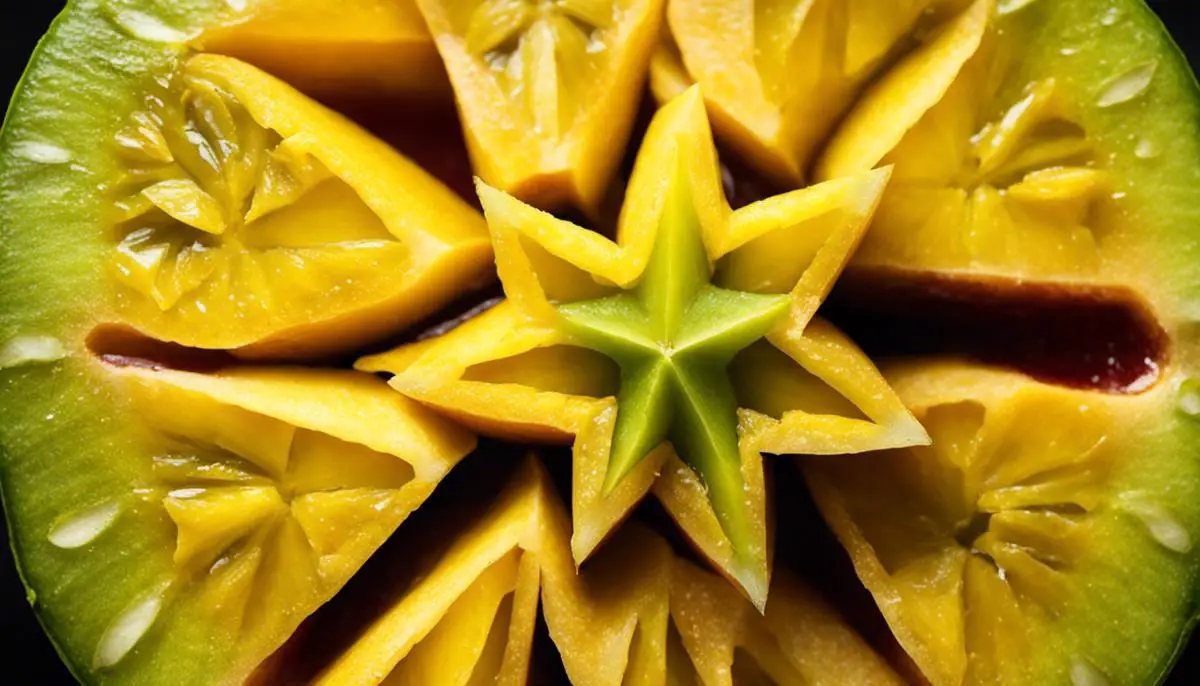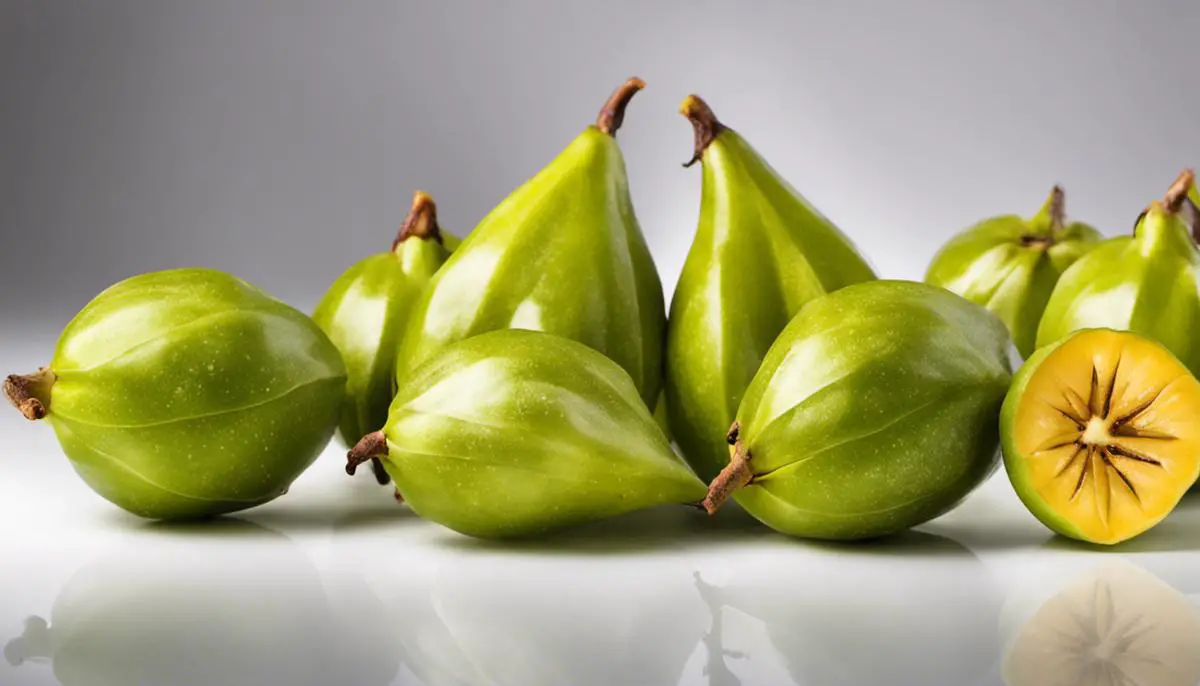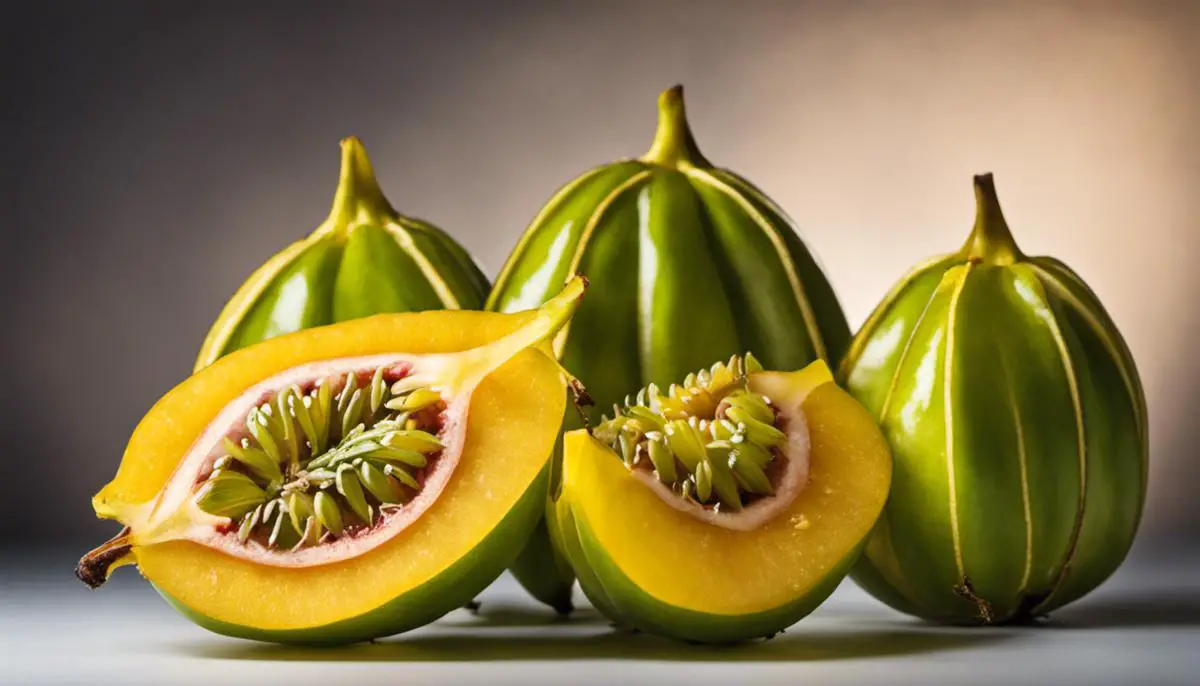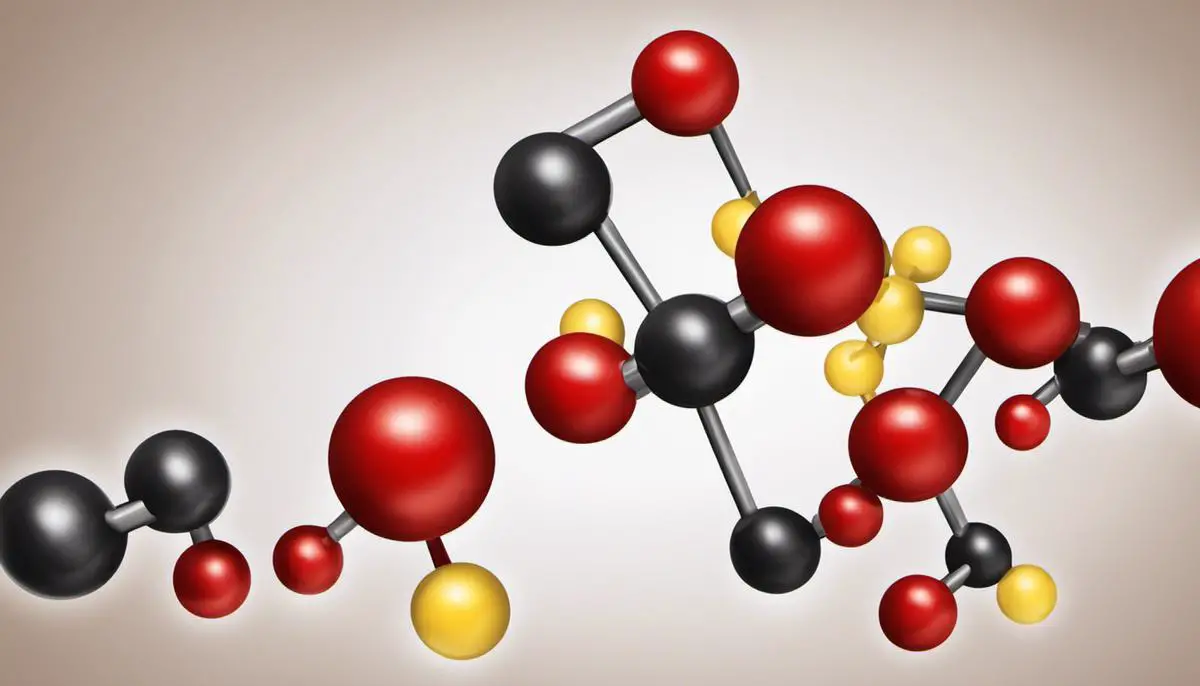Cholesterol, a common but fairly misunderstood substance, has a pervasive place in conversations about health. While it’s an essential component for the body, its high levels, particularly of bad cholesterol, can pose serious health risks. As we seek to understand more about cholesterol, it’s worth drawing our attention to the nutritional world around us, and more specifically, to a unique fruit known as carambola or star fruit. This exotic fruit, originating from Southeast Asia, not only graces our palate with its distinctive sweet and sour flavor, but may also offer a promising solution for managing cholesterol levels. Packed with a host of nutrients, carambola holds a potential for busting bad cholesterol, making it a great addition to one’s diet. However, like with any food, it’s also essential to be aware of its limitations and possible side effects.
Understanding Cholesterol
Understanding Cholesterol: The Good, The Bad, and the Ugly
Cholesterol is a fat-like substance located in all of the cells in your body. While your body needs a certain amount of cholesterol to produce hormones, vitamin D, and substances that aid digestion, too much can lead to serious health problems such as heart disease and stroke. Cholesterol is categorized into two types: High-Density Lipoprotein (HDL) and Low-Density Lipoprotein (LDL).
HDL, often known as “good” cholesterol, absorbs cholesterol and carries it back to the liver, which flushes it from the body. High levels of HDL cholesterol can reduce the risk of heart disease and stroke. LDL, on the other hand, is referred to as the “bad” cholesterol. High levels of LDL can lead to the buildup of cholesterol in your arteries, which can increase the likelihood of heart disease and stroke.
The Risk of High Levels of Bad Cholesterol
When there is too much LDL cholesterol in the body, it can combine with other substances in the blood and form a hard deposit called plaque. This plaque can narrow the arteries, making them less flexible — a condition known as atherosclerosis. If a clot forms and blocks a narrowed artery, a heart attack or stroke can occur.
Additionally, some people are genetically inclined to produce too much bad cholesterol, even if they eat a healthy diet. Therefore, managing cholesterol levels is crucial, not only through a balanced nutritional profile and lifestyle but also with the help of cholesterol-lowering food and medication, if necessary.
Understanding The Health Benefits of Carambola
Originating from the tropical regions, carambola, also widely recognized as star fruit for its unique star shape, blends a variety of sweet and tart flavors that are savored by many. However, beyond its appetizing flavor, lies an array of health benefits that it presents, which in particular include the potential ability to reduce bad cholesterol.
Evidence derived from studies suggests that carambola has high quantities of dietary fiber, a nutrient closely associated with the reduction of LDL or bad cholesterol in one’s body. Dietary fiber functions by binding to cholesterol within the digestive system, preventing its absorption into the body. In addition to this, star fruit is a source of pectin, a form of soluble fiber that notably reduces the volume of LDL cholesterol absorbed in the intestines.
Furthermore, carambola carries a rich concentration of antioxidants, specifically such as epicatechin, quercetin, and gallic acid. These contribute towards inhibiting the process of LDL cholesterol oxidation – a process that can potentially harm the walls of blood vessels, leading to heart diseases.
It is vital to bear in mind that although the inclusion of star fruit in a balanced diet can help manage cholesterol levels, it should not solely be relied upon for cholesterol control. Individuals grappling with high cholesterol should always engage with healthcare professionals or nutritionists to devise the most effective methods to lower their LDL cholesterol. Moreover, those with kidney issues or on medically prescribed treatments should also seek advice from health professionals before consuming star fruit due to potential adverse effects.

Overview of Carambola (Star Fruit)
The Tropical Delight: Carambola
Commonly referred to as starfruit due to its distinctive five-point shape, carambola is a tropical fruit appreciated for its radiant flavor and unique appearance. Its roots trace back to Southeast Asia, and it has since been cultivated globally, from the sunny coastlines of South America to the exotic islands of the Caribbean. This green to yellow fruit is appreciated not only for its star-shaped cross-section but also for the plethora of health benefits it offers. The multi-dimensional flavor of the carambola ranges from tart to sweet and even sour, offering a tantalizing treat for the taste buds.
Nutritional Profile of Carambola
Carambola is rich in important vitamins and minerals, such as vitamin C, potassium, and folate. It also contains pantothenic acid, copper, and zinc among its impressive reserves of nutrients. Moreover, carambola is high in dietary fiber while low in calories and fat, making it an excellent addition to a heart-healthy diet.
Carambola and Cholesterol Management
It is this nutritional profile that allows carambola to potentially aid in the reduction of bad cholesterol in the body. Bad cholesterol, also known as low-density lipoprotein (LDL), contributes to plaque buildup in blood vessels, leading to conditions such as arteriosclerosis, heart disease, and stroke.
Carambola’s Impact on Cholesterol Levels
Multiple studies suggest that regular intake of this fruit may help reduce LDL cholesterol levels and increase the level of high-density lipoprotein (HDL), or good cholesterol. It is primarily because of the fruit’s high fiber content, which can bind to cholesterol in the digestive system and remove it from the body before it can be absorbed into the bloodstream.
Benefits of Fiber from Carambola
Dietary fiber, a crucial component found in carambola, has been linked to lower levels of LDL cholesterol. It can slow down the absorption of cholesterol and sugar into the bloodstream, helping maintain stable blood sugar levels and controlling cholesterol levels. This goes beyond cholesterol control, as it may also reduce the risk of developing heart disease and diabetes.
Ensuring the incorporation of carambola in a varied and balanced diet, accompanied by consistent exercise, can lend itself to achieving superior cardiovascular health. However, it’s crucial for individuals who have kidney issues, particularly kidney stones, to converse with their physician prior to consuming starfruit, due to the high amounts of oxalic acid it contains which could potentially exacerbate their situation. As always, it’s advisable to consult a healthcare provider before making significant alterations to your regular diet.

Carambola and Cholesterol Levels
Examining the Cholesterol Reduction Properties of Carambola
Known across the world for its unique star shape and utilized widely in culinary endeavors, Carambola brings not just an attractive appearance and refreshing flavor to the table. It also secures its place for the numerous health benefits it offers. Most notable among them is its capacity to possibly reduce the levels of low-density lipoprotein (LDL) cholesterol, often referred to as “bad” cholesterol.Analysis of Nutritional Components in Carambola
Carambola is rich in dietary fiber, antioxidants, and other beneficial plant compounds. It is particularly highlighted for its fiber content, which has shown to reduce LDL cholesterol levels. Dietary fiber binds with cholesterol in the digestive system and aids in its excretion from the body, helping to prevent harmful build-up in the arteries. Similarly, antioxidants found in carambola help to combat oxidative stress, which can lead to inflammation and the increase in LDL cholesterol.Scientific Studies on Carambola and Cholesterol Reduction
Several studies have been conducted to analyze the cholesterol-lowering properties of carambola. In a 2014 animal study published in the Journal of Agricultural and Food Chemistry, it was found that extracts from carambola significantly lowered LDL cholesterol levels. Moreover, a 2016 research review published in the journal Antioxidants suggested that the antioxidants in carambola, notably epicatechin and quercetin, may potentially lower LDL cholesterol levels and overall cardiovascular risk. However, human studies are needed to further explore these findings.Carambola, Statins, and Cholesterol Management
While the potential cholesterol-lowering properties of carambola make it plausible for inclusion in a heart-healthy diet, it should not be seen as a replacement for medically-prescribed cholesterol management methods such as statins. Statins are pharmaceutical drugs that can significantly lower cholesterol levels to manage existing heart disease or high risk of such disease. While carambola can potentially contribute to the management of cholesterol levels, it should be used in conjunction with, and not in place of, medically advised treatments.Carambola and Potential Risks
It is important to note that while carambola boasts potential health benefits, it can also pose risks for certain individuals. Those with kidney conditions should avoid this fruit as it contains oxalates, which can be harmful if not properly filtered out by the kidneys. Moreover, consuming carambola alongside cholesterol-lowering medicines might pose risks of drug-food interactions. Always consult with a healthcare professional before introducing any dietary changes for cholesterol management.The relationship between carambola, or star fruit, and its potential effect on bad cholesterol is one that requires further exploration. Whilst preliminary findings have indicated the beneficial effects of carambola on cholesterol levels, rigorous scientific studies are yet to be made to establish these results conclusively. It’s critical not to overlook the importance of maintaining a balanced diet, engaging in regular physical activities, and adhering to prescribed medications for managing cholesterol effectively.

How to Incorporate Carambola in Your diet
Understanding Carambola and Its Health Benefits
The star-shaped carambola, widely known as star fruit, is a tropical delight native to Southeast Asia, although it enjoys popularity in South America and certain regions of the USA too. While it’s loved for its unique fusion of sweet and tangy flavors, the true merit of the star fruit lies in its dense nutritional profile. It is packed with a wealth of essential nutrients that contribute to overall health, including a powerful dose of vitamin C and powerful antioxidants. In addition to being fiber-rich, carambola is extremely low in calories and virtually devoid of fat.
Carambola and Cholesterol
Diet plays a significant role in managing cholesterol levels, and carambola could contribute favorably. It contains both insoluble and soluble fiber. Soluble fiber contributes to a reduction in low-density lipoprotein (LDL) cholesterol, often referred to as ‘bad’ cholesterol. This type of fiber binds to cholesterol in the intestines and prevents it from being absorbed into the bloodstream. By including fiber-rich foods like carambola in your diet, you could potentially lower your LDL cholesterol levels.
Incorporating Carambola into Your Diet
There are numerous ways you can enjoy carambola and leverage its health benefits. One of the simplest ways to consume it is by eating it fresh. Wash the fruit carefully, cut it into star-shaped slices, and eat it raw. It also makes a great addition to fruit salads, providing a unique texture and flavor. Blending carambola into a fruit smoothie can also be a great way of enjoying this cholesterol-lowering fruit.
Carambola can also be used as an ingredient in various dishes. Add it to a stir fry for a boost of flavor, or use it as a garnish for fish and poultry. It can even be incorporated into dessert recipes like fruit tarts and muffins.
Carambola and Other Healthy Foods
Combining carambola with other heart-healthy foods can increase the potential benefits. Pairing it with fatty fish like salmon, which is high in omega-3 fatty acids, would provide complementary benefits for managing cholesterol levels. Healthy whole grains are another good pair, as they also contain significant amounts of dietary fiber which can aid in reducing LDL cholesterol.
Considerations When Consuming Carambola
While carambola can offer several health benefits, it’s important to consume it in moderation as part of a balanced diet. Overeating carambola may lead to nutrient imbalances or digestive issues due to its high fiber content. Moreover, individuals with kidney complications should be cautious, as carambola contains a considerable amount of oxalates, which could contribute to kidney stones. It’s best to consult with a health professional before making significant changes to your diet or using foods as a treatment for health conditions.
Despite limited research directly examining the effects of carambola, or star fruit, on cholesterol levels, its rich nutrient content suggests that it may play a role in maintaining healthy cholesterol levels when included in an overall balanced, varied diet.

Precautions and Possible Side Effects
Star Fruit: Harnessing the Power of the Tropics to Combat Bad Cholesterol
Star fruit, affectionately known as carambola, is a nutrient-packed tropical fruit that has been touted for its numerous health advantages. Some studies indicate that this fruit may have the potential to lower levels of low-density lipoprotein (LDL), or what’s commonly referred to as ‘bad cholesterol’. Foods high in fiber, like carambola, can help lower cholesterol levels. In fact, one serving of carambola contains roughly 2.8 grams of fiber, which accounts for about 11% of the daily recommended intake of fiber. Once consumed, the dietary fiber in carambola binds with LDL cholesterol in your digestive tract, effectively preventing it from entering your bloodstream.
Interactions with Cholesterol-Lowering Medications
The beneficial reduction of bad cholesterol levels by carambola, however, can become risky for people already on cholesterol-lowering medications. The liver is involved in processing cholesterol-lowering drugs such as statins, as well as carambola toxins. Hence, overconsumption of carambola could lead to liver overexertion, making it harder for the body to process cholesterol-lowering statins, potentially moderating their effectiveness. Therefore, it is crucial for individuals already on such medication to consult with their health practitioner before incorporating carambola into their diet extensively.
Be Aware of Potential Allergies
Another consideration to bear in mind when consuming carambola is the possibility of allergies. Like any other food, carambola may trigger allergic reactions in susceptible individuals. Though relatively rare, symptoms may manifest as skin irritation, itching, swelling or breathing difficulties. If you have a known allergy or intolerance to carambola, it’s advised to avoid consuming it to prevent any adverse reactions.
Carambola’s High Oxalate Content
Carambola also boasts a high oxalate content, which can pose a risk to individuals with kidney disorders. High oxalate foods can lead to the formation of kidney stones in susceptible individuals. It’s not solely the cholesterol-lowering properties, but this high oxalate content that makes carambola a double-edged sword for individuals with kidney diseases, as they are usually prescribed a low-oxalate diet.
Overall, while carambola possesses promising cholesterol-lowering properties, cautionary intake is essential, especially for individuals on cholesterol-lowering medications, those with pre-existing kidney conditions, or potential allergies. Always consult with a healthcare professional before making drastic changes to diet or health routines.

Even within the everyday simple things like diet and eating choices, exist potential solutions to our health issues. The humble carambola or starfruit is a testament to that. Backed by scientific evidence, this fruity powerhouse is thought to be laden with pearls of wellness, its nuanced composition contributing to lower levels of bad cholesterol. But as we enjoy the benefits of carambola, let’s also remain cognizant of the potential risks, tailor its consumption to our individual health needs, and maintain a balanced approach to our diet. After all, achieving and maintaining good health isn’t about fanatically adhering to a single solution, but it’s about making thoughtful, informed, and diverse dietary choices. So, here’s to a healthy life with a well-managed cholesterol level, with the exquisite carambola contributing its part to the cause.
